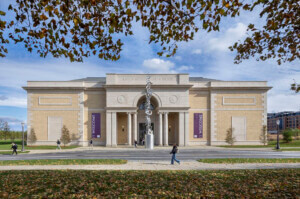In the heart of Omaha, the Joslyn Art Museum has outsized influence on the city and the Great Plains region at large, particularly if you’re into architecture: The original building is a lauded 1931 art deco structure impeccably preserved, albeit expanded, part of a sprawling campus by architectural greats. The 1994 Walter & Suzanne Scott Pavilion was the first U.S. commission by Norman Foster, and this September, the Rhonda and Howard Hawks pavilion is set to open, designed by Snøhetta and Alley Poyner Macchietto Architecture (APMA).
The new 42,000-square-foot pavilion improves the visitor experience and enhances the existing museum grounds, with an additional 40 percent more gallery space for collections. Notably, the museum has announced that new works on view will include new acquisitions from the renowned Phillip G. Schrager Collection. The paper gallery will feature selections from Omaha native Ed Ruscha, right on the heels of his major retrospective at MoMA.
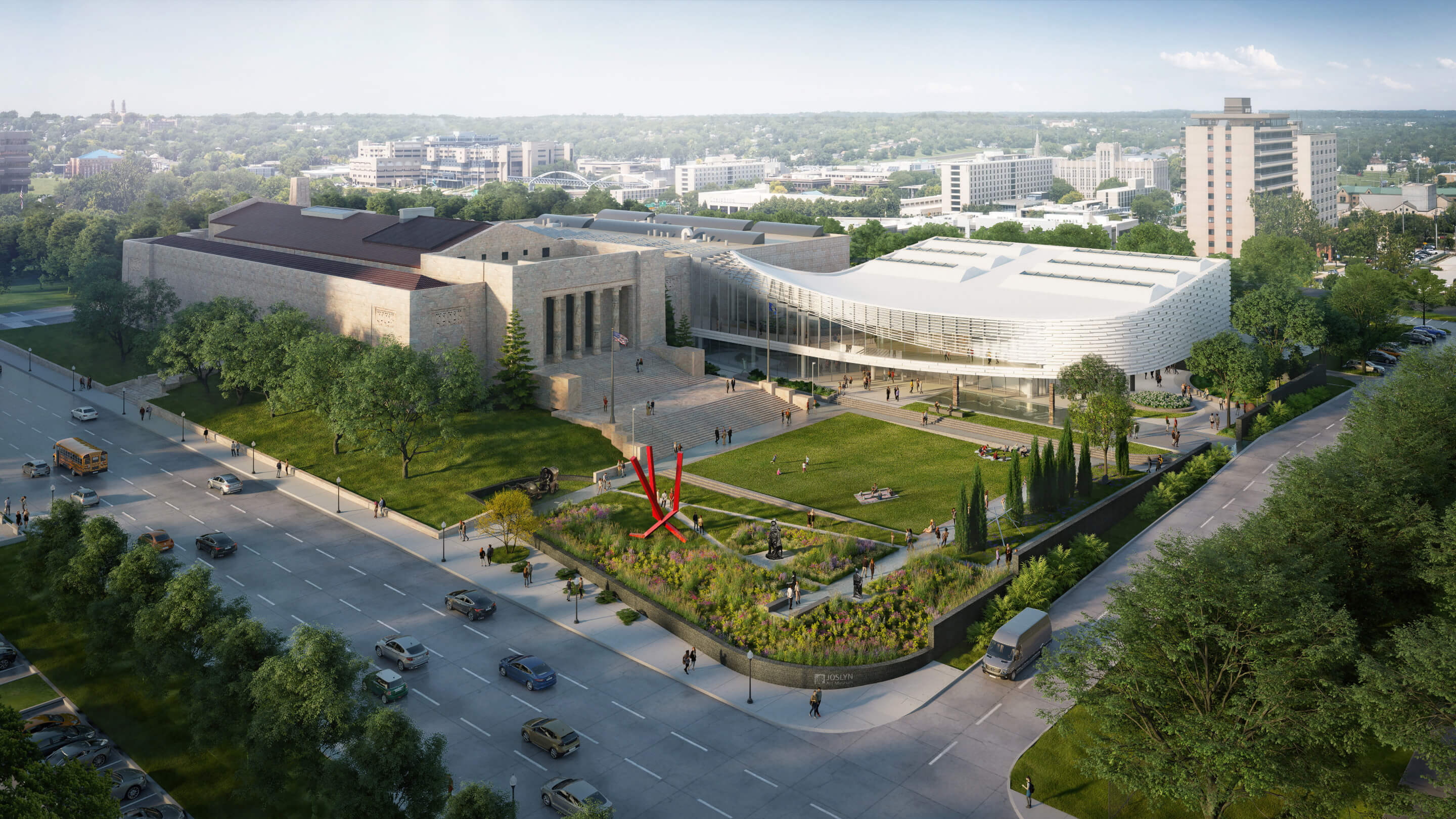
The Joslyn is not only a core institution in Omaha and the greater region because of its exquisite collections—“5,000 years of human creativity” is on view, according to a statement from the museum—but entrance to the Joslyn is free. This investment on behalf of citizens from the City is also joined by a multi-billion-dollar investment project in the downtown area and riverfront more broadly.
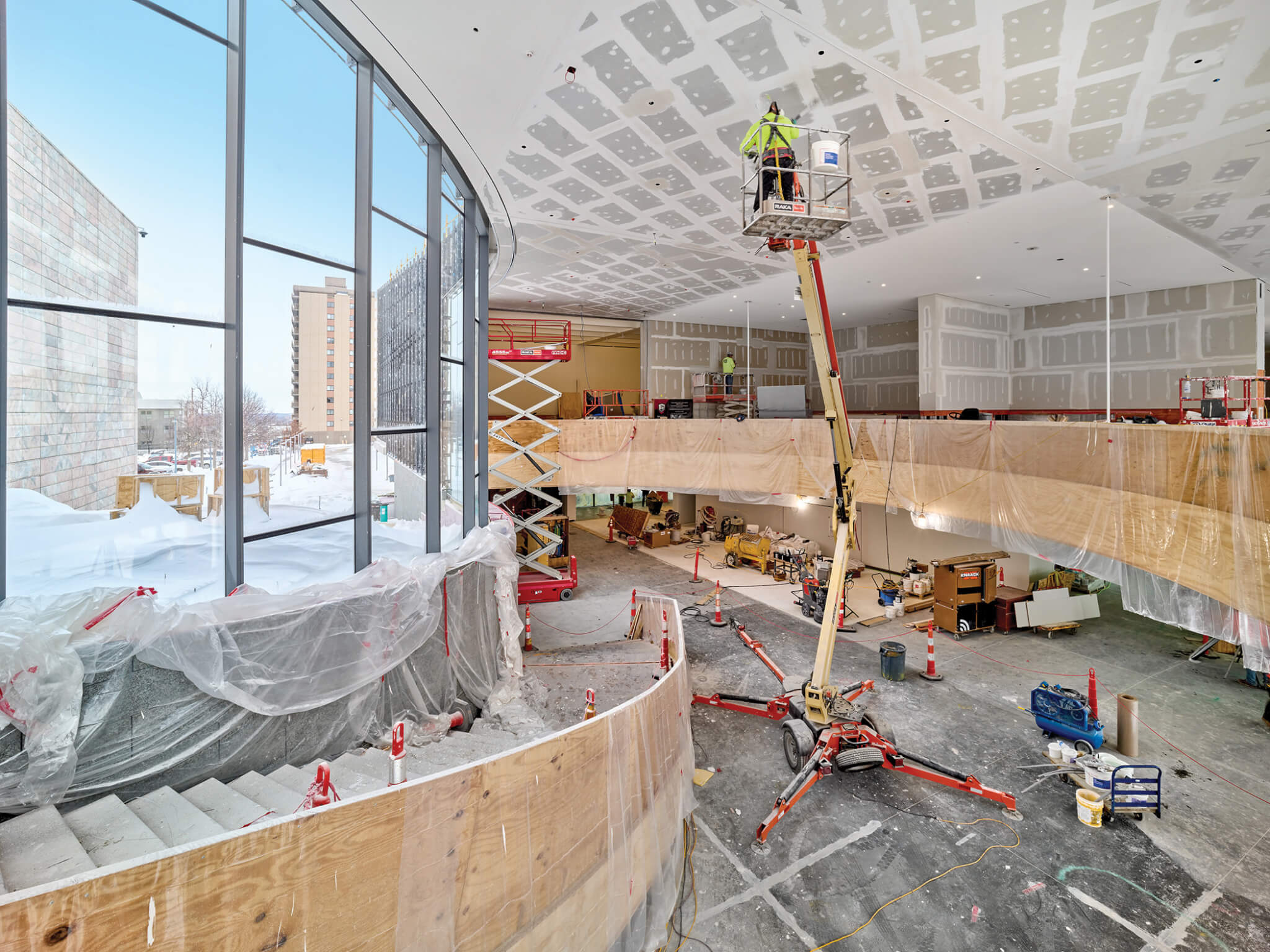
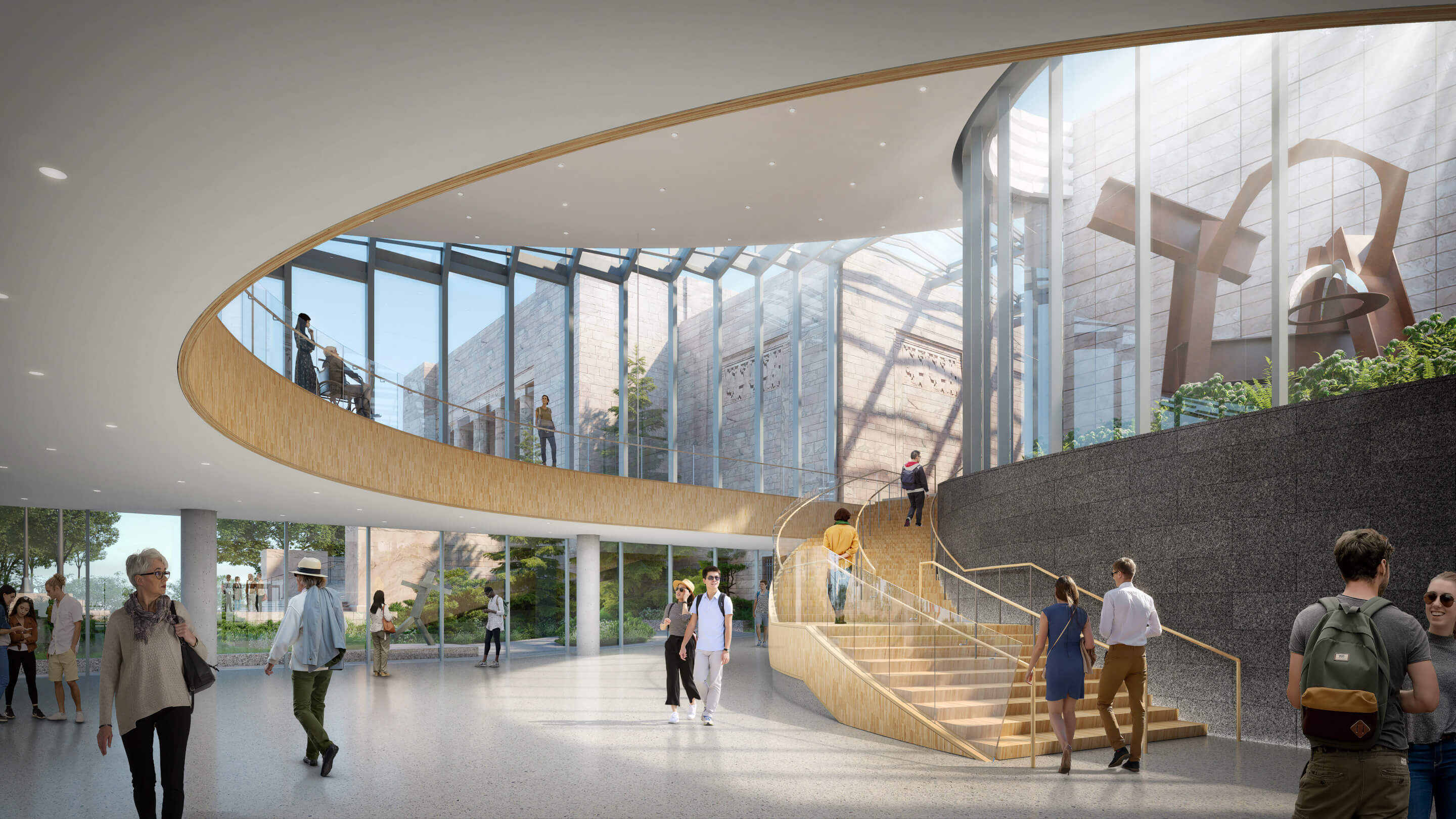
“We are thrilled to welcome everyone back to a Joslyn Art Museum that is both true to its proud history and also thoroughly transformed, inside and out,” said Jack Becker, CEO and executive director of the Joslyn in a statement.
Renderings of the design by Snøhetta and APMA look to connect the original 1931 Memorial building and the glass atrium by Norman Foster. A curvaceous central stair and dynamic roofline swoop to welcome visitors into a daylit central space. A key material detail is pink granite, a luxe material echoed in the original art deco design that continues into the palette of the new spaces. The subtle coloration is a welcome textural element, defeating a too-white or clinical feel. The twisting form of the new atrium also adds a unique feeling, propelling visitors upward and into the new daylit gallery spaces on the pavilion’s second floor.
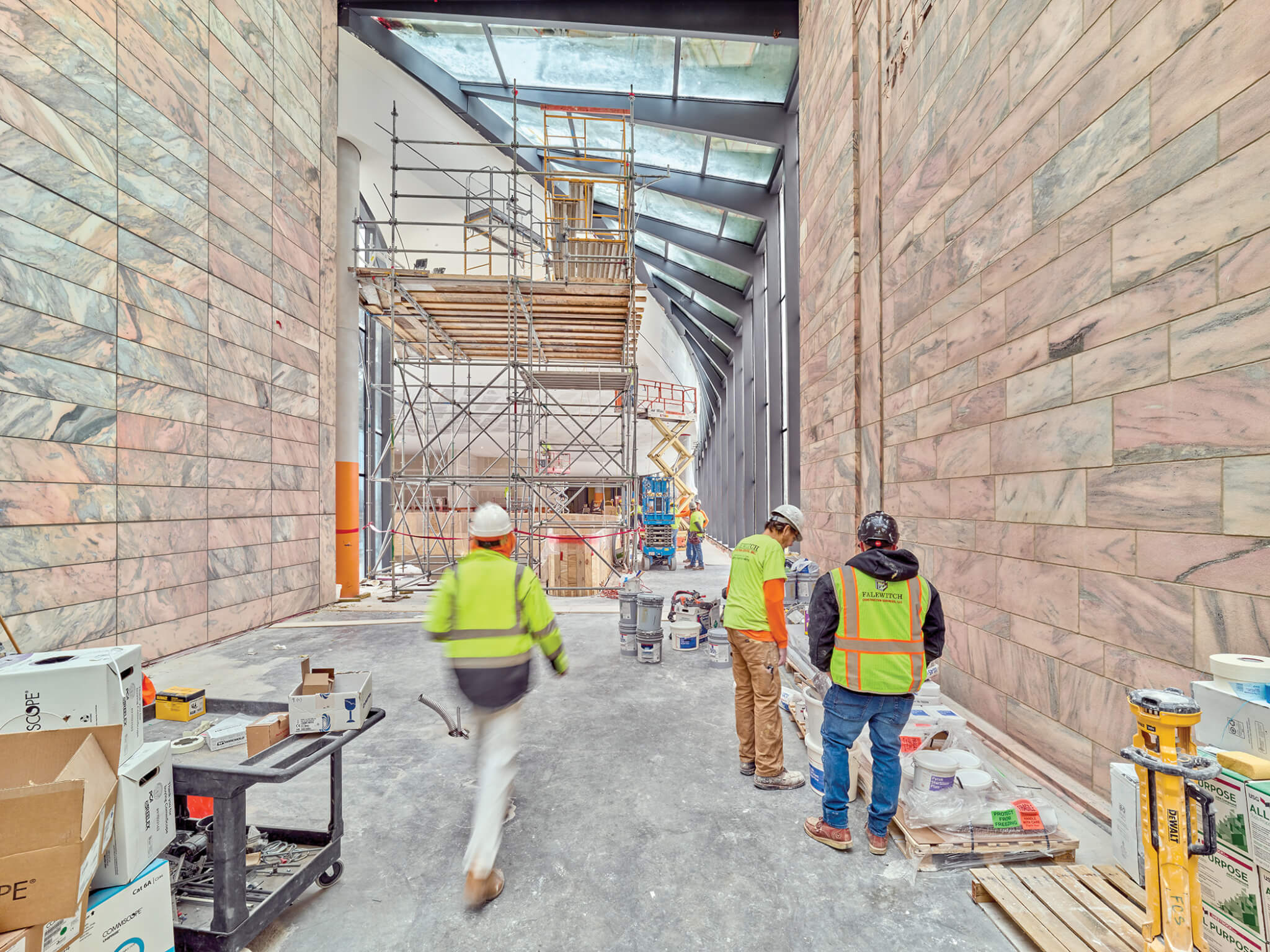
Aside from the new forms gracing the Joslyn campus, the museum has also been hard at work rehanging the entire collection—the first time this has been undertaken since opening in 1931. With the goal of recontextualizing the art as the culture sector continues to reckon with issues like provenance, underrepresented artists, and colonial histories of collecting, the refreshed exhibition promises to respond to some of these calls.
Becker invoked the importance of design in the entire process to reimagine the institution, saying “To our brilliant architects at Snøhetta, I express my admiration for their sensitive and imaginative approach, expanding upon our existing buildings to give our visitors a new experience of the Joslyn Art Museum while preserving our most cherished spaces.”
The Joslyn Museum of Art is expected to open in September 2024.









